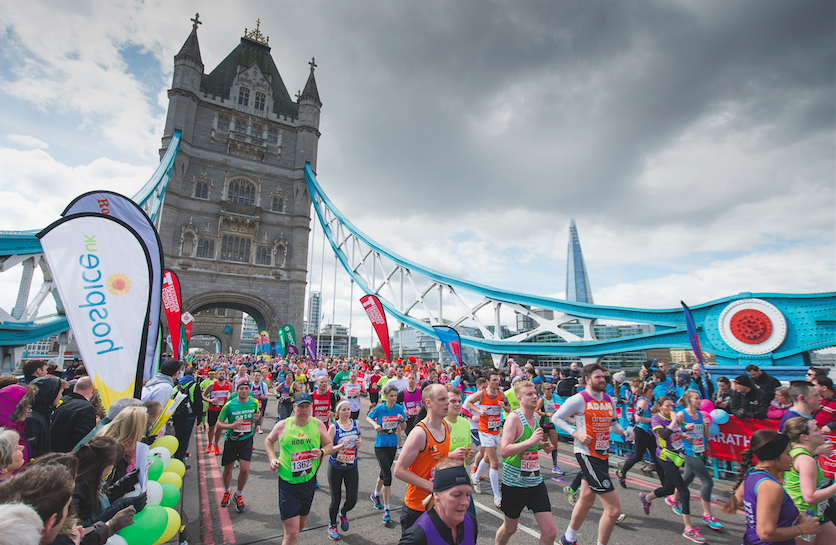Emily Drakes, Lead Physiotherapist at HCA at the Shard shares her advice on avoiding last-minute niggles and injuries.
With this year’s London Marathon fast approaching, many runners are tapering their training down towards the big day. However, this training period also carries a high risk of injury as Emily Drakes, Lead Physiotherapist at HCA at The Shard, explains:
“I know how exciting these last few weeks of training are, particularly if you’re preparing for your first ever marathon.
“However, many runners will have been training since before Christmas and with tired limbs more susceptible to injury I would urge people not to fall into the trap of overdoing it.
“I see scores of would-be participants visit us with lower limb injuries in the lead-up to the London Marathon – and many of these cases could have been avoided by taking some simple steps in the final days prior to the marathon.”
The best cure for these injuries is prevention, so here are some of Emily’s top tips for avoiding injury in your final days of training and on the day itself:
1. Stick to your plan
The biggest cause of a bad race is setting off too fast. It’s easily done with all the excitement and adrenaline at the start so you may have to actively slow down to stick to your planned pace.
Don’t be tempted to change your target at this late stage. If you put too much pressure on your body now, you’ll either injure yourself in training or end up disappointed on the day.
Bear in mind if it’s as hot you may need to adjust your pace to have a manageable race.
2. Keep it consistent
On race day try to do exactly what you’ve been doing on your long training runs.
Wear the same clothes and trainers, eat the same breakfast and take on the same fluid and snacks on the way round. Any last minute changes could have unexpected consequences!
3. Wrap yourself in cotton wool
The worst thing would be to injure yourself now when the marathon is just around the corner.
Stay away from competitive sports in the last week, the cost of injury at this stage is too high to risk it. Enjoy the restful week to get your legs in the best shape for the run.
4. Do a dynamic warm-up
The last thing you want in the weeks leading up to the race is to strain a muscle, ruling you out.
Warming up is crucial as it allows time for adequate blood flow to reach your working muscles, meaning more nutrients and oxygen will reach them.
It also enables muscle temperatures to rise gradually, which reduces the risk of injury and increases the effectiveness of your workout.
5. It’s all in the mind
On the day, there’s no more training that you can do to improve your performance – the most important thing to focus on is your mind.
You have to remember that you’ve trained well for this race and that your body is capable of running the full distance.
Break the race into manageable chunks to give yourself mini-goals and enjoy the atmosphere.
6. Rest
It’s too late to improve your fitness at this stage. Don’t get trapped into thinking that the more sessions you do the better – rest and recovery are an essential part of the training process and quality is better than quantity.
You’ll probably already have a training diary to record details of all your sessions, but it’s also important to get enough sleep and eat a balanced diet to maintain your health in the weeks leading up to the day.
7. And finally, enjoy yourself!
Running a marathon is a huge achievement and London is one of the best supported marathons so enjoy being the star for the day! Never let your competitive mind overpower your enjoyment.
When you’re happy and relaxed, you’re a better runner. Competitive thoughts lead to stress and sometimes feelings of self-doubt and judgment.
Check those feelings at the start line and just enjoy the run.
Running MOTs – HCA at The Shard
In advance of the London Marathon 2017, HCA Healthcare UK has launched a physiotherapy-led Running MOT clinic at The Shard. Running is great exercise but whether you’re a reluctant jogger or a seasoned marathon runner there is always room to improve your style, strength and control in order to keep injuries at bay and make running as enjoyable and comfortable as possible.







